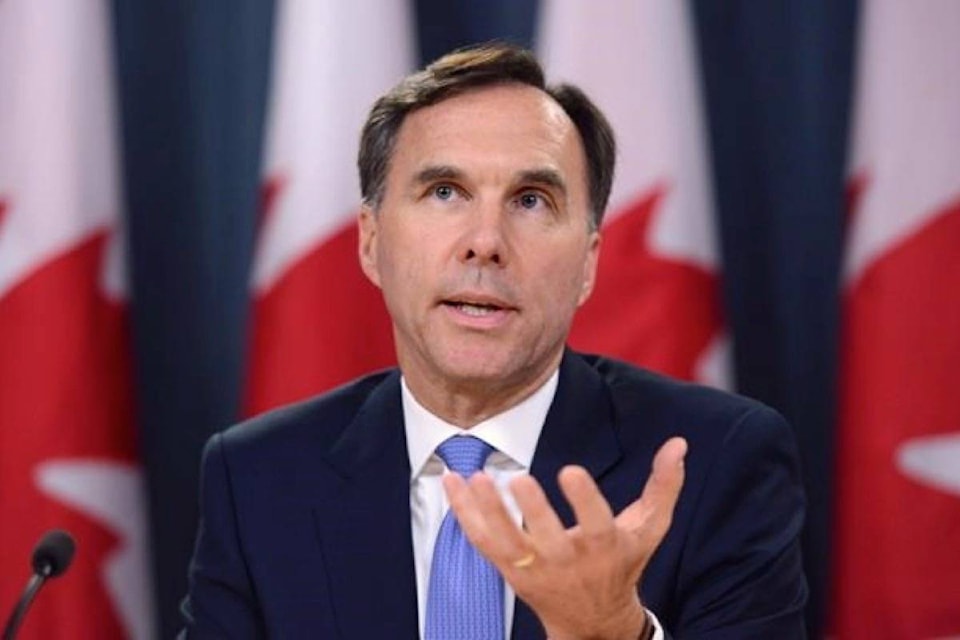OTTAWA — The upcoming enrichment of the Canada Pension Plan will help fuel a 48-fold boost to the public fund’s assets over the long haul — to more than $15.8 trillion by 2090, according to federal calculations.
In comparison, the public plan’s investment manager reported $326.5 billion in net assets at the end of the first quarter of 2017-18.
Long-term projections on the evolution of the CPP’s post-reform assets were included in an internal briefing note prepared for federal Finance Minister Bill Morneau earlier this year. The memo referred to numbers published last October by the Office of the Chief Actuary.
The figures accounted for the impact of a CPP deal reached last year between the federal government and the provinces. They agreed to changes that will increase Canadians’ retirement benefits through the public plan by raising contributions as of 2019.
READ MORE:
READ MORE:
CPP reform was a key goal for Ottawa and provinces like Ontario as a way to provide more financial security for future generations of retirees.
But it has also faced significant criticism. For example, advocates for small businesses have warned it will be devastating for employers and drive up costs in what they have described as a “payroll tax.”
The increase also means the Canada Pension Plan Investment Board, which manages the CPP contributions, will be responsible for far more money over the coming decades.
Without the enhancement, the total CPP assets would have totalled $6.7 trillion in 2090, the projections said.
“Additional CPP assets are projected to grow rapidly in the early years as a result of the high level of contributions compared to benefits paid, reaching $70 billion by 2025 and almost $1 trillion by 2045,” said the January briefing memo prepared for Morneau ahead of a scheduled meeting with CPPIB president and CEO Mark Machin.
The projections predicted the assets in the enhanced CPP portion to surpass those collected under base CPP program by 2055.
Machin has acknowledged CPPIB will have to adjust to its additional obligation of managing a much-larger envelope. The organization invests CPP assets not currently needed to pay pension, disability and survivor benefits.
“With or without reform, the CPP fund is projected to grow significantly in the future, and we’re well-prepared to manage a larger fund,” Machin told MPs during his appearance at a parliamentary committee last November.
“When we evaluate investment programs, new processes, and supporting technology, we always want to ensure that they can be scaled to take into account increased size. We are very confident that we’ll be ready to manage the additional funds.”
Machin has also stressed the importance of the arms-length CPPIB’s independence from government influence when it comes to its decisions around investments. He’s called that separation from potential political pressure one of the secrets to its success.
The briefing note to Morneau outlined several expected areas of focus for his meeting with Machin, including discussion about the Liberal government’s proposed infrastructure bank.
The government’s $35-billion infrastructure bank will seek to use public funds as leverage to attract billions more in private investment for major projects, such as new bridges, transit systems and rail lines. Ottawa has said it hopes the Canada Infrastructure Bank will entice institutional investors, such as pension plans, to participate.
The partially redacted memo to Morneau noted that Machin has emphasized the importance of CPPIB’s independence when it comes to infrastructure investments.
The document’s suggested speaking notes also featured an overview of the government’s infrastructure bank and a reference to CPPIB’s investment record when it came to infrastructure.
The document, obtained by The Canadian Press under the Access to Information Act, said CPPIB’s infrastructure assets accounted for 7.6 per cent of its global portfolio at the time and that it held only one infrastructure asset in Canada: a stake in the Toronto region’s 407 Express Toll Route.
The memo also noted the CPPIB has looked outside Canada due to a lack of investment opportunities big enough — Machin has said it seeks projects larger than $500 million — and its reluctance to invest in brand-new projects that often carry more risk.
When it comes to the projected size of the CPP’s assets in 2090, Jack Mintz, a tax-policy expert from the University of Calgary, said expected population increases and inflation should be taken into consideration.
He added that CPP reform will lift retirement benefits, but it will still be quite small when compared to Canadians’ total savings.
“It’s an increase, but it’s not an overwhelming increase — it’s kind of advertised as a bigger change than it really was.”
Andy Blatchford, The Canadian Press



